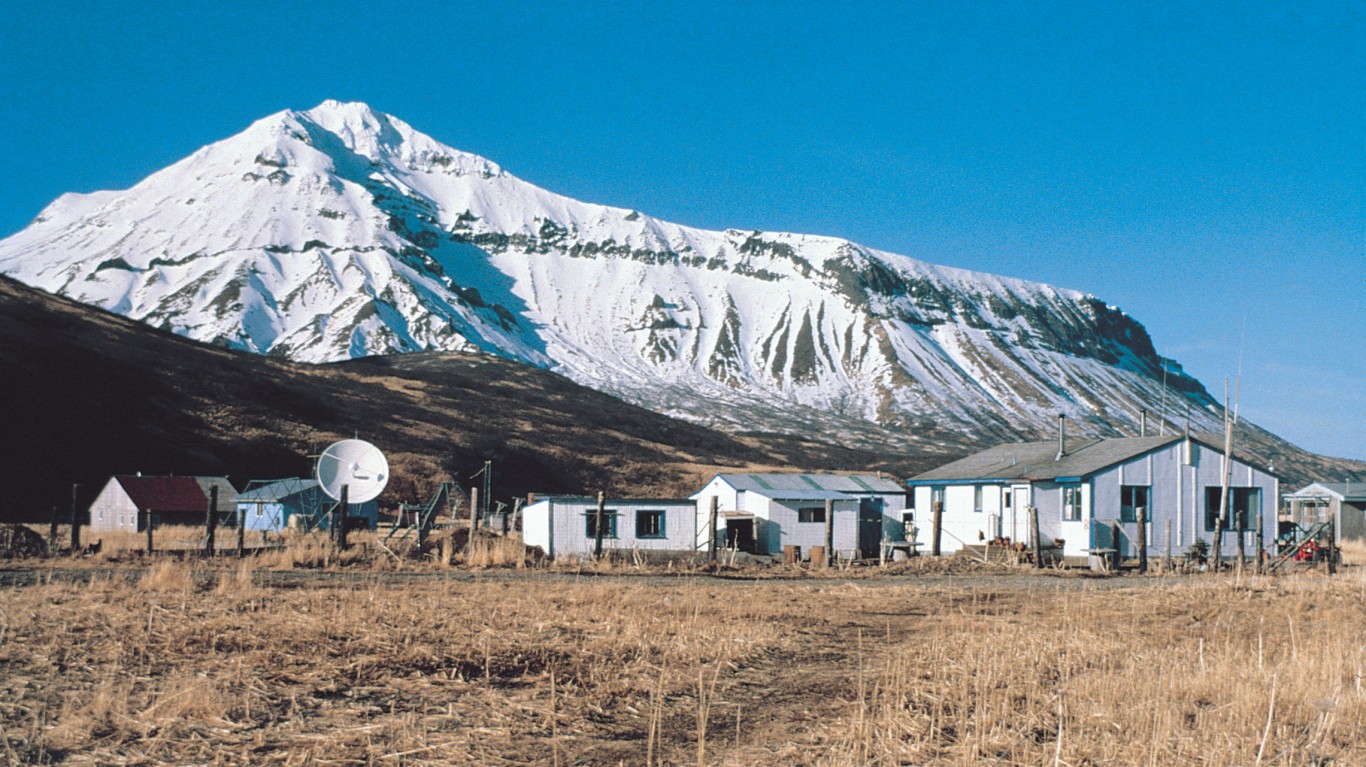Health and Healthcare
This County Has the Worst Health Insurance in America

Published:

Health insurance is critical to the overall U.S. health care industry and how it helps care for those who are sick. Unlike the systems in some nations, health insurance in America is not universal. Some people rely on federal programs. Others rely on private insurance. Some programs cover doctors, while others handle hospital bills, dental care and eye care. Overall, the U.S. health care system is a patchwork that helps some individuals more than others. Those who it does not help can end up with huge financial burdens.
The share of Americans under the age of 65 without health insurance fell every year between 2010 (when the Affordable Care Act was signed into law) and 2016. Though the uninsured rate among Americans younger than 65 has inched up over the years since, it remains well below the 17% or more figures in the years leading up to the ACA.
As there is no universal health care program, employer-based health insurance covers most Americans under age 65. Under this system, 10.3% of Americans younger than 65 (approximately 25 million people) lacked health insurance in 2019 — and that was before the COVID-19 pandemic put over 22 million Americans out of work.
Using data from the U.S. Census Bureau, 24/7 Wall St. identified the county with the worst health insurance coverage. The choice was based on the share of residents under age 65 (the age of eligibility for Medicare) who are uninsured.
To find the county with the worst health insurance coverage in the nation, 24/7 Wall St. reviewed five-year estimates of the percentage of the noninstitutionalized civilian population under 65 without health insurance from the Census Bureau’s 2019 American Community Survey (ACS).
Of the 3,220 counties or county-equivalents, 3,142 had boundaries that fell within one of the 50 states or the District of Columbia.
Counties were excluded if the noninstitutionalized civilian population under 65 was less than 1,000, or if the sampling error associated with a county’s data was deemed too high.
The sampling error was defined as too high if the coefficient of variation (a statistical assessment of how reliable an estimate is) for a county’s under-65 uninsured rate was above 15% and greater than two standard deviations above the mean coefficient of variation for all counties’ under-65 uninsured rates. We similarly excluded counties that had a sampling error too high for their under-65 noninstitutionalized civilian population, using the same definition.
We selected the under-65 age group because Americans become eligible for Medicare at age 65, and the uninsured rate for the population above this age is less than 1% nationwide. However, because the Census Bureau does not publish insurance coverage estimates specifically for the under-65 age group, we aggregated the data from more granular age breakdowns.
To ensure each aggregate estimate’s sampling error could be assessed using the definition above, we derived a margin of error for each aggregate estimate using the successive differences replication variance estimation methodology recommended and used by the Census Bureau.
The remaining 2,946 places were ranked based on their under-65 uninsured rates. To break ties, we used the number of insured people in the same population group.
The shares of the population covered by each type of insurance (Medicare, Medicaid, VA, employer, direct-purchase and Tricare/military) are for the same cohort and also are aggregated from five-year ACS estimates. The estimates reflect people who are covered by that type of insurance alone or in combination with other types on the list. So, when a person is covered by more than one type of insurance, they are included in each group.
The county with the worst health insurance coverage is Aleutians East Borough, Alaska. Here are the details:
Click here to see all the counties with the worst health care insurance coverage.
Credit card companies are pulling out all the stops, with the issuers are offering insane travel rewards and perks.
We’re talking huge sign-up bonuses, points on every purchase, and benefits like lounge access, travel credits, and free hotel nights. For travelers, these rewards can add up to thousands of dollars in flights, upgrades, and luxury experiences every year.
It’s like getting paid to travel — and it’s available to qualified borrowers who know where to look.
We’ve rounded up some of the best travel credit cards on the market. Click here to see the list. Don’t miss these offers — they won’t be this good forever.
Thank you for reading! Have some feedback for us?
Contact the 24/7 Wall St. editorial team.